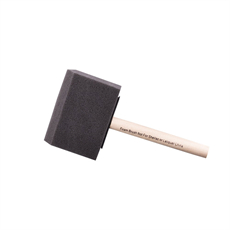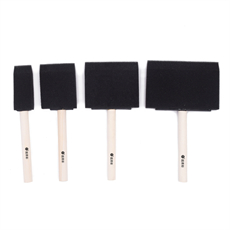Mastering paintbrush techniques and brush strokes is essential for creating a wide range of artistic effects in your paintings. Here are some fundamental brush strokes and techniques to help you improve your skills:
- Basic Brush Strokes:
- Flat Brush Stroke: Use the full width of a flat brush to create a straight, even stroke. This stroke is ideal for covering large areas and creating clean edges.
- Round Brush Stroke: With a round brush, you can create controlled lines and shapes. Vary the pressure to change the thickness of the stroke.
- Scumbling: Apply a dry brush stroke over an existing layer of paint to create a textured, hazy effect. This technique is great for adding depth and texture to your work.
- Blending Techniques:
- Wet-on-Wet: Apply wet paint onto a wet surface to achieve smooth transitions and gradients. This technique is commonly used in oil and acrylic painting.
- Dry Brushing: Use a nearly dry brush to blend colors softly or create textured effects. It works well for fur, grass, and other textured surfaces.
- Feathering: Feathering involves gently overlapping brush strokes to create subtle transitions and gradients. It’s useful for creating soft, realistic skin tones or blending skies in landscapes.
- Texture Techniques:
- Impasto: Apply thick layers of paint with a palette knife or a brush to create a three-dimensional, textured surface. This technique is often used for creating expressive and textured artwork.
- Sgraffito: Apply a layer of paint and then scratch into it with a tool like a palette knife or the back of a brush to reveal the underlying layers. It’s great for adding intricate details or creating a scratchy texture.
- Stippling: Use a stippling brush or the tip of a round brush to create a pattern of dots or small strokes. Stippling can add texture and depth to your paintings.
- Special Effects:
- Splattering: Dip a brush in paint and flick it onto the canvas to create a splatter effect. This is often used for creating stars in a night sky or for adding texture to abstract pieces.
- Masking: Apply masking tape or a masking fluid to areas you want to preserve. Paint over the masked areas and then remove the masking material to reveal clean, untouched sections.
- Linear and Detail Techniques:
- Fine Lines: Use a fine round brush and a steady hand to create fine lines and intricate details in your artwork.
- Cross-Hatching: This technique involves creating a series of parallel lines that overlap at various angles to create shading and texture. It’s commonly used in pen and ink drawings but can also be applied to painting.
- Practice and Experiment:
- The key to mastering brush strokes and techniques is practice. Create a “brushstroke reference sheet” where you experiment with various strokes and techniques to see how they work with different brushes, paints, and surfaces.
- Observation:
- Observe and study the work of accomplished artists to learn from their brushwork. Pay attention to how they use brush strokes to convey emotion, texture, and depth in their paintings.
Remember that mastering paintbrush techniques takes time and patience. Don’t be afraid to make mistakes and experiment with different approaches. Over time, you’ll develop your own unique style and become more skilled at using brush strokes to bring your artistic visions to life.














